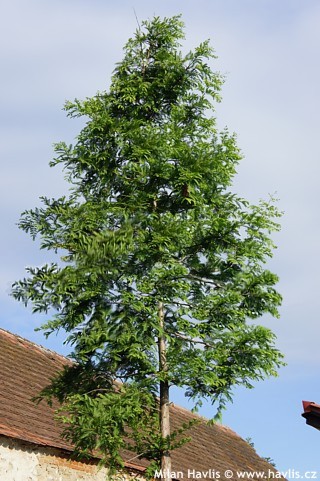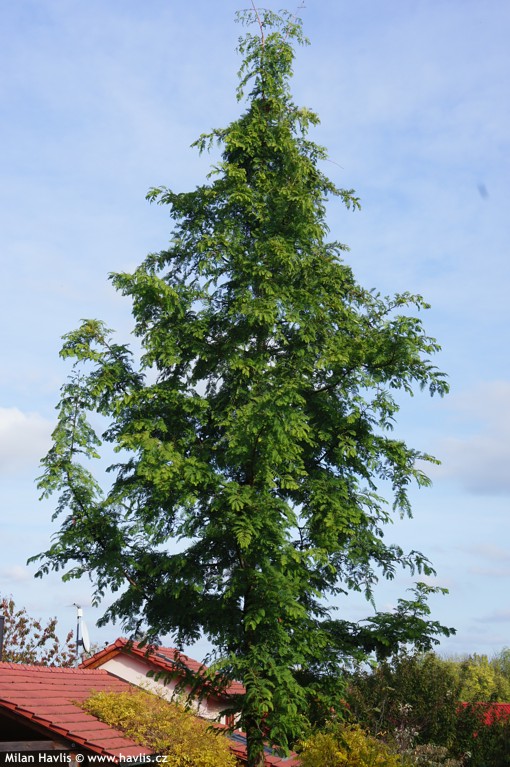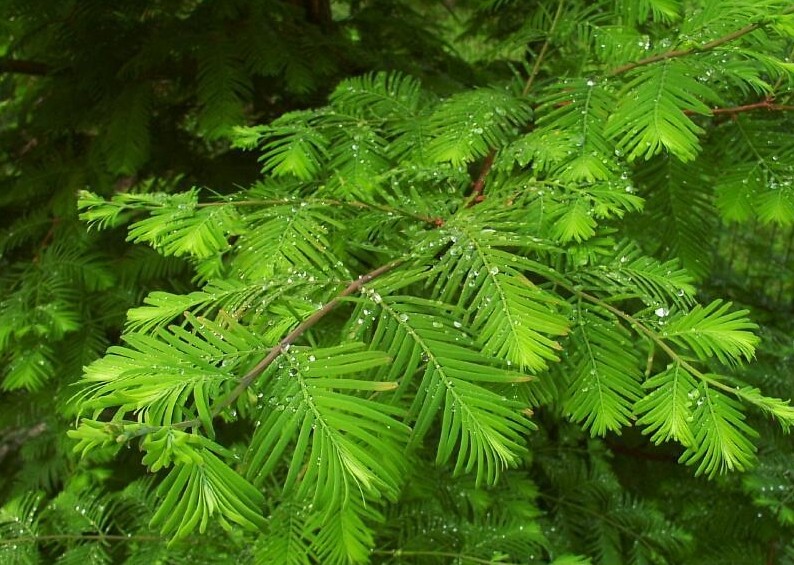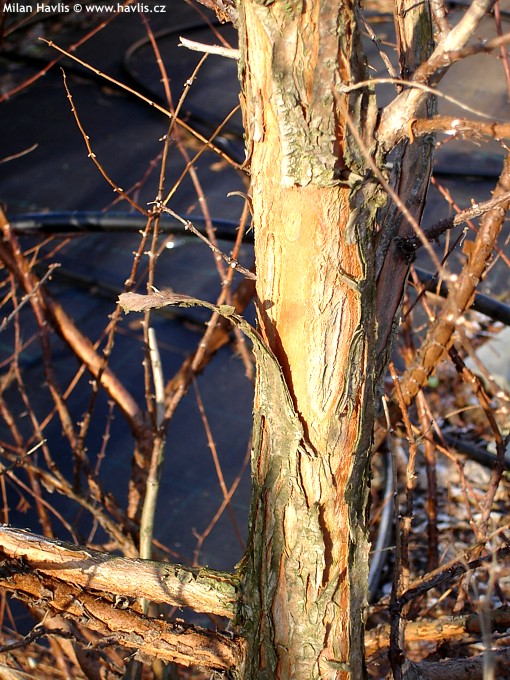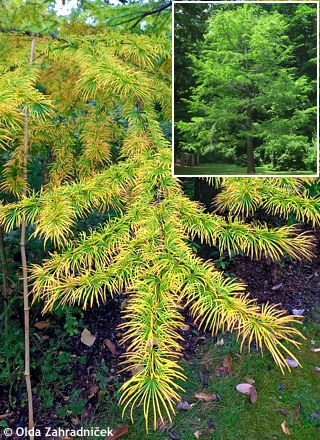Metasequoia glyptostroboides dawn redwood
There’s a horticultural legend from mid-1940’s which goes something like this: For centuries, metasequoia had been believed to be extinct in the wild and buried only in fossils just like trilobites. It wasn't until 1941 that a live specimen was found in China that was immediately subjected to botanical research, enthusiastically propagated, and subsequently introduced to the world as newly resurrected creatures of our prehistorical past. Who wouldn't want a tree from the dinosaur’s era in his own yard! However. I bet you know what it’s like when it comes to legends – every talking head adds something to it. By the year 2000 the story got so muddled, with so many people feasting on it, not only those from the media, but those from academic circles who wanted to elevate their own prestige, too, that botanist Jinshuang Ma of the Brooklyn Botanic Garden decided to trace the true footsteps. In 2002 and consequently in 2003 he published two papers on the subject where he explained the following:
In 1943, the Chinese botanist Zhan Wang collected the first seeds and a few branches from a single specimen he found. Unaware of their importance and of the fact that he had mistaken named the plant for Glyptostrobus pensilis, he sent them to Nanjing University's Professor W.C. Cheng. There they identified his mistake and, amazed by his discovery, in the spring of 1946 they sent one of their students C.T. Hwa to examine the site in the so-called Metasequoia Valley to collect more seeds. Plenty more seeds, I have to say, he collected several kilograms (!) of them and when we consider that he had to walk on foot a large part of the journey, his merits are directly proportional to the weight of his backpack. Upon his return, the seeds were distributed from the university to 76 addresses around the world – from botanical gardens and schools to private collectors. The combination of the plant and its legend kicked off a horticultural sensation and huge media interest and caused a lot of speculations and academical disputes among experts.
The post-war cooling down of relations between communist China and the capitalist West ended almost all exchange for some 30 years, including botanical exchange. Hence no more seeds from China. Luckily many growers in other countries, having had to do with what they had, naturally tried vegetative propagation, too. They were delighted to discover how easily metasequoia was propagated by cuttings, and moreover that it was resistant to almost all diseases and pests. Thanks to them, this tree is now readily available in every good nursery, and, thanks to plant’s variability, there are quite a few attractive varieties (29 registered until today) suitable even for smaller gardens.
The species of dawn redwood is a deciduous conifer which, thanks to its flat, fresh green needles, is often mistaken for swamp cypress (taxodium distichum). The needles are soft and turn bright yellow and golden orange in autumn.
It is a fast grower, slowing down only after it reaches some 10 m tall. It forms a very narrowly conical shape with branches from the bottom unless the stem is cleared to look like a standard tree, and in order to reveal the beautiful, fluted, and peeling bark of the lower trunk - grey brown to dark orange brown, showing reddish tissue when freshly peeled off. Pruning, if desired, can be done at the end of winter but is not necessary, only to shape young plants if unsightly.
Dawn redwood is closely related to bald cypress (taxodium distichum) and requires very similar conditions: humus-rich, deep, moist soil, some sources even recommend boggy soil. We have been growing it here in partly water-logged location and it has been doing great. It is fully hardy to min. -34 °C (USDA zone 4).
Last update 01-01-2007; 16-01-2017; 02-04-2023

4 420 Kč

5 091,5 Kč
Goods are shipped all over Europe. For Russia and U.K. and for further details please read about SHIPPING OPTIONS HERE.
Are you interested in a serious discount for orders NOV-FEB? Check your options here.
THE PRICES INCLUDE VAT of 15%. For quick conversion you can use 1 CZK = approx. 0.04 EUR
- STANDARD QUALITY - Plants of this group are 1st class quality with number of branches and overall density adequate to their size and age, considering they were container grown.
- DE LUXE QUALITY - This label guarantees a luxurious quality of manually selected plants that, compared to their height and age, are exceptionally dense and beautiful.
- EXTRA - These plants are usually mature and bigger specimens with exceptional overall appearance.
- STANDARD (as described in the plant form) means a tree with a trunk of 190-210 cm and a crown at the top, unless specified differently. The commercial size for trees is their girth measured in the height of 1m from ground.
- HOBBY - These plants are of the same quality as our standard-quality plants but younger and therefore cheaper.
- SHRUB - a woody plant with branches growing bushy from the ground level.
- HALF-STANDARD or MINI-STANDARD - a small tree with shorter trunk, its size is usually specified.
- FEATHERED - These are trees with branches growing already from the base of the trunk and up along the stem.
- GRASSES and PERENNIALS - Sizes given usually read the diameter of the pot or the clump, as specified.

































